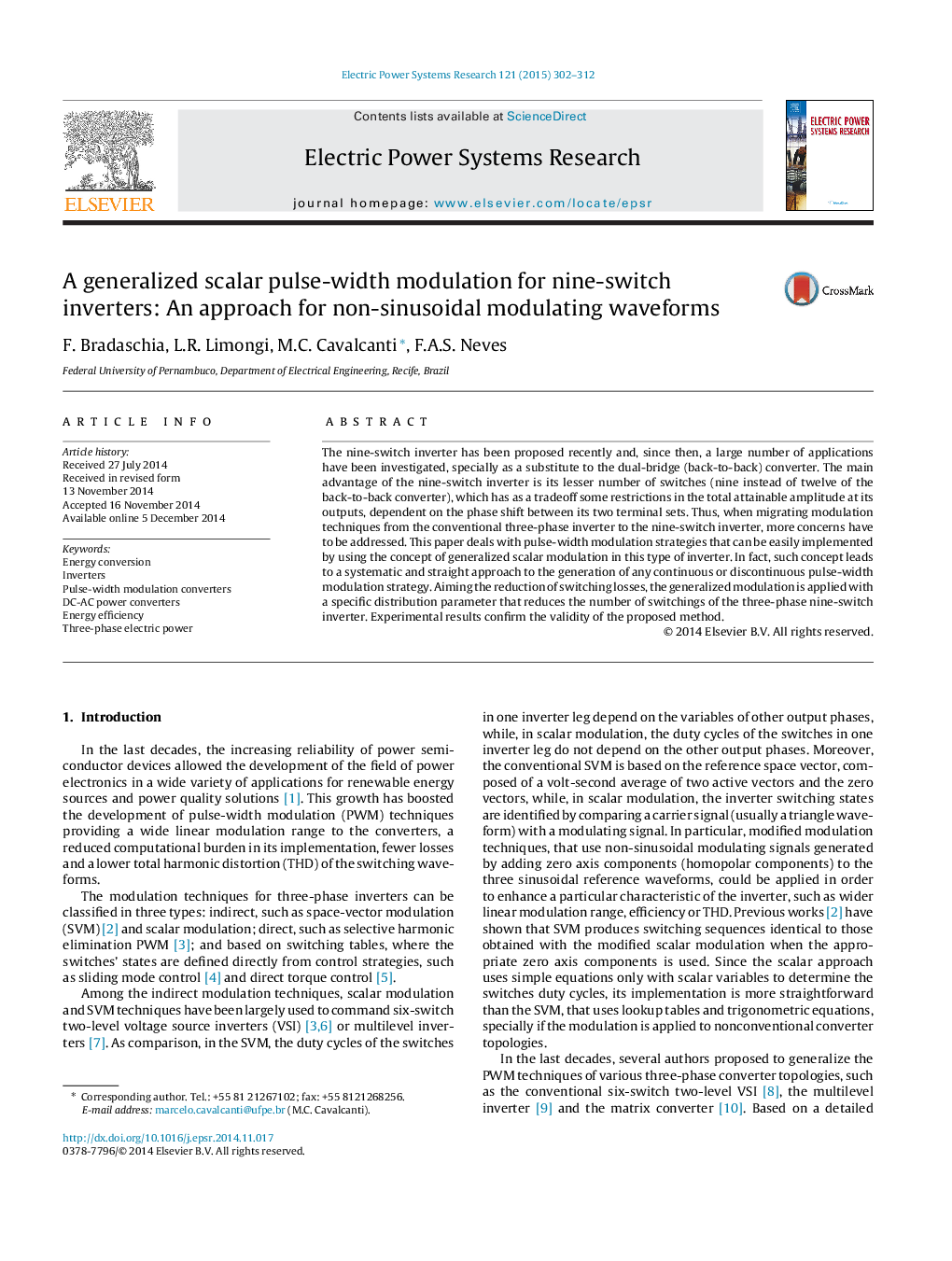| Article ID | Journal | Published Year | Pages | File Type |
|---|---|---|---|---|
| 7112891 | Electric Power Systems Research | 2015 | 11 Pages |
Abstract
The nine-switch inverter has been proposed recently and, since then, a large number of applications have been investigated, specially as a substitute to the dual-bridge (back-to-back) converter. The main advantage of the nine-switch inverter is its lesser number of switches (nine instead of twelve of the back-to-back converter), which has as a tradeoff some restrictions in the total attainable amplitude at its outputs, dependent on the phase shift between its two terminal sets. Thus, when migrating modulation techniques from the conventional three-phase inverter to the nine-switch inverter, more concerns have to be addressed. This paper deals with pulse-width modulation strategies that can be easily implemented by using the concept of generalized scalar modulation in this type of inverter. In fact, such concept leads to a systematic and straight approach to the generation of any continuous or discontinuous pulse-width modulation strategy. Aiming the reduction of switching losses, the generalized modulation is applied with a specific distribution parameter that reduces the number of switchings of the three-phase nine-switch inverter. Experimental results confirm the validity of the proposed method.
Related Topics
Physical Sciences and Engineering
Energy
Energy Engineering and Power Technology
Authors
F. Bradaschia, L.R. Limongi, M.C. Cavalcanti, F.A.S. Neves,
